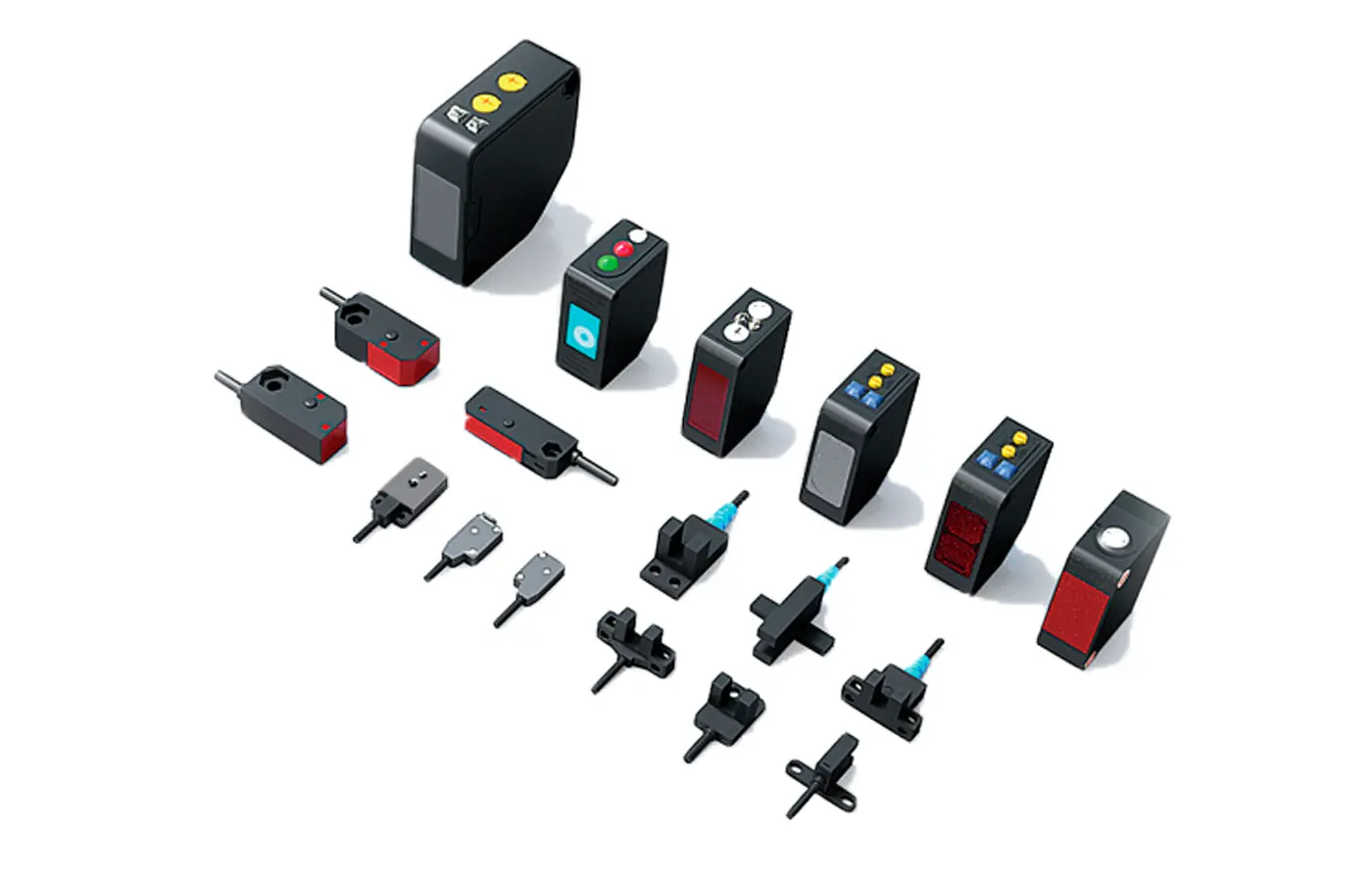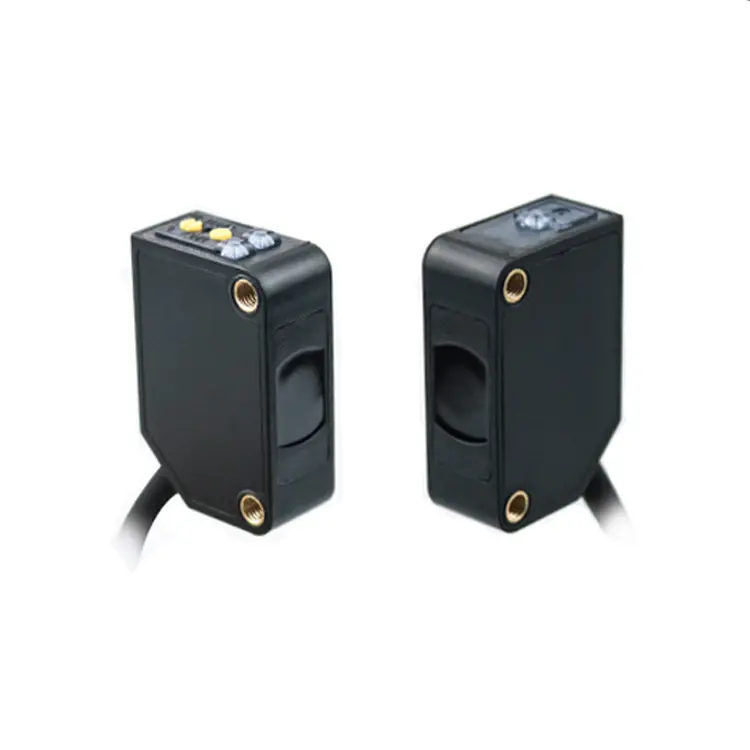Photoelectric sensor selection and use considerations
2023-04-19
Photoelectric sensor, is a kind of sensor that uses photoelectric element to complete the detection function. It first represents the measured change as a change in the light signal, and then further converts the light signal into an electrical signal to complete the sensing function.
A photoelectric sensor is a small electronic device that detects changes in the intensity of the light it receives. Early photoelectric sensors used to detect the presence or absence of objects were small metal cylindrical devices with a transmitter with a calibrated lens that focused light onto a receiver, which exited a cable to connect the set to a vacuum tube amplifier. Inside the metal cylinder there is a small incandescent lamp as the light source. These small, rugged incandescent sensors were the prototype of today's photoelectric sensors.
First, the transmitter is aimed at the target uninterrupted beam; second, the receiver receives the beam from the transmitter and converts it into an electrical signal; after that, the detection circuit detects the receiver output electrical signal and retains only the valid signal.
Photoelectric detection has many advantages such as high accuracy, fast response and non-contact, so photoelectric sensors have a wide range of applications in both detection and control. The working principle of photoelectric sensor is to achieve the judgment of on and off by blocking and conducting the infrared emitted light and the change of current induced in the infrared receiver tube. Slot-type optocoupler is also called trough-type photoelectric switch, which is usually a U-shaped structure.

I. Selection
Its selection mainly consider three points: how wide the slot width to be wide; resolution (light slit width); fixed way
1. Slot width, the detection object needs to pass through the slot of the slot-type optocoupler to achieve blocking of infrared light, so the slot width of the photoelectric sensor should be wider than the detection object, and there should be a certain amount of margin for easy installation.
2. The resolution of slot type optocoupler, such as the detection object is a tooth disc, the width of its tooth disc teeth is d, the width of the tooth disc teeth slot is 3, then the slot type optocoupler optical slit width is required to be less than d, and less than f, so as to ensure that the infrared light can be effectively blocked and conductive, in order to meet the above conditions, choose the slot type optocoupler with a large optical slit width.
3. Slot type optocoupler has two types: with fixed hole and without fixed space, choose according to the actual situation.
4. Installation position. The sensor should be installed so that the outer diameter of the detection tooth plate exceeds the optical axis of the slot type optocoupler by 1-2mm. this can effectively block the light.
Second, the peripheral circuit parameters selection
1. When selecting the peripheral circuit of the slot type optocoupler, first determine what the load resistance of the slot type optocoupler receiver tube is, and select the current of the infrared transmitter tube according to the conversion efficiency of the slot type optocoupler.
Third, the use of precautions
Photoelectric sensor in the use of the problem how to do? How can we reduce the photoelectric sensor failure? This is a lot of users in the use of photoelectric sensors will encounter problems, then how to solve these problems, in fact, in daily life more attention to the use of photoelectric sensors can reduce the occurrence of failure.
 Photoelectric sensor use precautions.
Photoelectric sensor use precautions.
1. installation welding, photoelectric sensor pin root and pad of the small distance must not be less than 5mm, otherwise welding easy to damage the tube core. Or cause changes in the performance of the tube core.
2. The small detectable width of the pair of photoelectric sensors is 80% of the width of the lens of this kind of photoelectric switch.
3. When using inductive loads (such as lamps, motors, etc.), the transient impact current is large, which may degrade or damage the photoelectric sensor of the second AC line.
4. Infrared photoelectric sensor lens can be wiped with wiping paper, prohibit dilution solvents and other chemicals, so as not to damage the plastic mirror.
5. For the actual requirements of the user's site, in some harsher conditions, such as dusty occasions, the production of photoelectric sensors in the selection of sensitivity increased by 50%, in order to adapt to the long-term use of photoelectric sensors to extend the maintenance cycle requirements.
6. photoelectric sensor must be installed in no strong light direct irradiation, because the strong light in the infrared light will affect the normal work of the receiving tube.
With the development of the times, the frequency of the use of photoelectric sensors also began to gradually increase up. I hope this introduction you can pay attention to the problems that may be encountered in the use of photoelectric sensors, to reduce the use of photoelectric sensors may occur in the process of failure.

